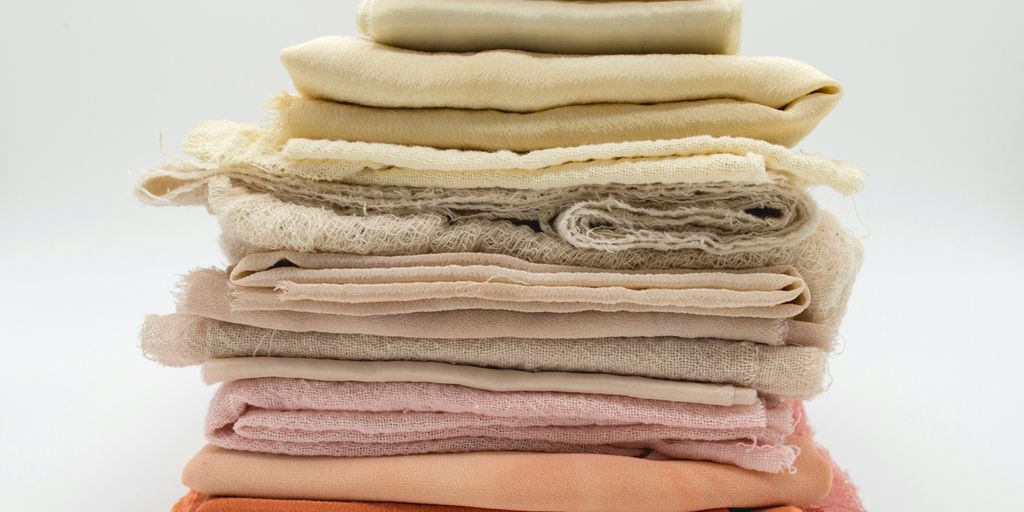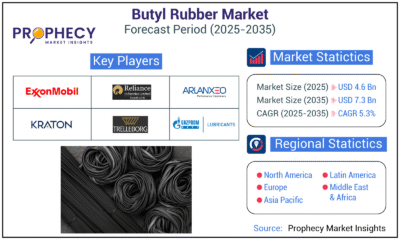Green Technology
Exploring the Benefits of Hemp Fabric: The Sustainable Choice for Eco-Conscious Consumers

Hemp fabric is gaining traction in the world of sustainable textiles, and for good reason. Known for its strength and eco-friendly properties, it presents a viable alternative to traditional materials like cotton and polyester. As more consumers become aware of their impact on the environment, hemp fabric stands out as a smart choice for those looking to make greener decisions. This article explores the numerous benefits of hemp fabric, highlighting its unique qualities, environmental advantages, and practical applications in everyday life.
Key Takeaways
- Hemp fabric is incredibly strong and durable, making it a long-lasting choice for various products.
- It requires much less water and fewer pesticides to grow compared to cotton, making it a more sustainable option.
- Hemp fabric is naturally breathable and has antimicrobial properties, ensuring comfort and hygiene.
- Unlike synthetic materials, hemp is biodegradable, which helps reduce plastic pollution and supports a circular economy.
- The versatility of hemp fabric allows it to be used in clothing, home textiles, and even industrial applications, making it a practical choice for eco-conscious consumers.
Understanding Hemp Fabric’s Unique Properties
Hemp fabric is making waves, and for good reason. It’s not just another trendy material; it boasts a range of unique properties that set it apart from conventional textiles. Let’s explore hemp fabric and its amazing characteristics.
Natural Strength and Durability
Hemp fibers are incredibly strong, making hemp fabric exceptionally durable. I remember my grandma telling me stories about how hemp was used for ship sails back in the day – that’s how tough it is! Compared to cotton, hemp can last significantly longer, resisting wear and tear. This means clothes made from hemp can withstand more use and last longer, reducing the need for frequent replacements. It’s a win-win for your wallet and the environment. It’s also why you see it used in things like ropes and canvas.
Breathability and Comfort
One of the best things about hemp fabric is how breathable it is. Unlike some synthetic materials that trap heat and moisture, hemp allows air to circulate freely. This keeps you cool in the summer and helps regulate your body temperature. Plus, hemp softens with each wash, becoming more comfortable over time. I’ve got a hemp shirt that’s seriously the softest thing I own now, after a few washes. It’s also great for people with sensitive skin, as it’s less likely to cause irritation than some other fabrics.
Antimicrobial Benefits
Hemp naturally has antimicrobial properties, which means it can resist the growth of bacteria and fungi. This is a huge plus for clothing, especially activewear, as it helps to prevent odors and keep you feeling fresh. I’ve noticed my hemp socks don’t get nearly as stinky as my regular cotton ones after a workout. This also makes hemp a great choice for items that come into close contact with the skin, like bedding and towels. Plus, it’s a natural alternative to synthetic antimicrobial treatments, which can sometimes be harmful.
The Environmental Impact of Hemp Fabric
The fashion industry? It’s got a huge environmental problem. From the water it uses to the chemicals it dumps, making clothes the usual way is really hard on the planet. But hemp fabric? It’s a different story. Let’s get into why it’s a much better choice.
Low Water Consumption
Okay, so here’s the deal: hemp needs way less water than cotton. Like, a lot less. Cotton farming is notorious for sucking up water resources, especially in areas that are already dry. Hemp, on the other hand, can often grow just fine with rainwater. That’s a big win for saving water. It’s a big deal when you consider the sustainable decorative materials that are available.
Reduced Pesticide Use
Another big problem with conventional fabrics is all the pesticides used to grow them. These chemicals can pollute the soil and water, and they’re not great for the people working on the farms either. Hemp is naturally resistant to a lot of pests, so farmers don’t need to use as many pesticides. Less pesticides means a healthier environment.
Biodegradability and Soil Health
When clothes made from regular fabrics end up in the landfill, they can stick around for ages, releasing harmful stuff as they break down (or don’t break down). Hemp is biodegradable, so it breaks down naturally. Plus, hemp plants have deep roots that help improve soil health. They can even help prevent erosion. It’s like they’re cleaning up the soil as they grow. It’s a win-win.
Hemp Fabric in Sustainable Fashion

Ethical Production Practices
When we talk about sustainable fashion, it’s not just about the materials; it’s also about how those materials are made. Hemp shines here. Hemp cultivation often supports fair labor practices and community development. Unlike some conventional fabrics that rely on exploitative labor, hemp production can provide opportunities for farmers and workers to earn a fair wage in safe conditions. Plus, because hemp requires fewer pesticides and herbicides, it reduces the risk of exposure to harmful chemicals for those working in the fields. It’s a win-win for both the environment and the people involved.
Versatility in Design
Hemp isn’t just for crunchy granola types anymore. It’s incredibly versatile and can be used in a wide range of clothing and accessories. From sturdy workwear to flowy dresses, hemp can do it all. Designers are getting more creative with hemp blends, combining it with other sustainable fibers like organic cotton or even recycled materials. This opens up even more possibilities for textures, weights, and styles. You can find hemp in:
- T-shirts and jeans
- Bags and hats
- Home decor items like curtains and upholstery
- Even sustainable adhesive technologies in some innovative applications!
Long-Lasting Quality
One of the best things about hemp fabric is its durability. Hemp fibers are incredibly strong, meaning hemp clothing can withstand a lot of wear and tear. This is a big deal when you’re trying to be more sustainable because it means you won’t have to replace your clothes as often. Think about it: a hemp shirt that lasts for years is way better for the environment than a cheap cotton shirt that falls apart after a few washes. Plus, hemp tends to get softer with each wash, so it just gets better over time. It’s an investment in your wardrobe and the planet. Hemp canvas fabric is a great example of this.
Comparing Hemp Fabric to Other Materials
Hemp vs. Cotton
Okay, so let’s get real about hemp versus cotton. Cotton’s been the king of fabrics for ages, right? It’s soft, it’s familiar, and everyone knows it. But here’s the thing: cotton is a thirsty crop. Like, really thirsty. It needs a ton of water and often involves a lot of pesticides. Hemp, on the other hand, is way more chill. It needs less water and fewer pesticides, making it a more eco-friendly choice. Plus, hemp is seriously durable – we’re talking way stronger than cotton. Cotton is more prone to wear and tear. However, cotton is generally cheaper and softer to the touch initially. Hemp softens over time, though, and some people prefer its texture.
Hemp vs. Polyester
Polyester is everywhere. It’s cheap, it’s wrinkle-resistant, and it’s in, like, everything from workout gear to fancy dresses. But polyester is a synthetic fiber made from petroleum, which isn’t exactly great for the planet. It’s not biodegradable, so it sticks around in landfills for ages. Hemp, being a natural fiber, breaks down much easier. Hemp is also more breathable than polyester, which can feel kind of suffocating, especially in hot weather. Polyester wins on price and stain resistance, but hemp wins on sustainability and comfort.
Hemp vs. Bamboo
Bamboo fabric has been gaining popularity as a sustainable option, and it’s true that bamboo grows quickly and doesn’t need a ton of pesticides. However, the process of turning bamboo into fabric can involve some pretty harsh chemicals. It’s not always as eco-friendly as it seems. Hemp, on the other hand, generally requires less processing and fewer chemicals. Both are breathable and moisture-wicking, but hemp tends to be more durable. Plus, hemp has that cool, slightly textured feel that some people really dig. Bamboo is often marketed as super soft, but that softness can come at an environmental cost. So, while bamboo has its perks, hemp often comes out on top in terms of overall sustainability and long-lasting quality.
The Future of Hemp Fabric in Consumer Choices
Growing Popularity Among Eco-Conscious Consumers
It’s pretty clear that more and more people are waking up to the environmental problems caused by fast fashion and unsustainable materials. Hemp fabric is increasingly becoming a go-to choice for those looking to reduce their impact. You see it everywhere now, from small boutiques to bigger brands starting to incorporate hemp into their lines. People are starting to understand that sustainable packaging solutions are important, and that extends to what they wear.
Innovations in Hemp Fabric Technology
Hemp isn’t your grandma’s burlap sack anymore. Seriously, the advancements in processing techniques are making hemp fabrics softer, more versatile, and way more appealing. We’re talking about blends with other sustainable fibers like organic cotton and even stuff like Tencel. Plus, there’s research going into making the fibers finer and easier to dye, which opens up a whole new world of possibilities for designers. It’s not just about being eco-friendly; it’s about being fashionable too. Here’s a quick look at some areas of innovation:
- Enzyme Treatments: Breaking down the tough fibers for a softer feel.
- Blending Techniques: Combining hemp with other fibers to improve drape and texture.
- New Weaving Methods: Creating lighter and more breathable hemp fabrics.
Hemp’s Role in Circular Economy
Hemp has the potential to play a huge role in a circular economy. Because it’s biodegradable and requires fewer resources to grow, it fits perfectly into a system where materials are reused and recycled. Think about it: hemp clothing can be composted at the end of its life, returning nutrients to the soil. Plus, the plant itself can be used for a variety of other products, minimizing waste. It’s a win-win. The versatility of hemp extends to textiles, paper, biofuel, and building materials, providing a sustainable alternative across various industries. By championing hemp, we pave the way for a more sustainable and healthier Earth for generations to come, one fabric at a time.
Practical Applications of Hemp Fabric
Hemp fabric isn’t just some trendy eco-fad; it’s actually super useful in a bunch of different areas. I think people are surprised by how many things you can make with it. It’s not just for crunchy granola types anymore!
Clothing and Accessories
Okay, so clothing is probably the first thing that comes to mind. But it’s more than just t-shirts! Hemp makes really durable jeans, jackets, and even formal wear. Plus, it’s great for accessories like bags, hats, and even shoes. I’ve seen some really cool hemp backpacks that look like they’ll last forever. The cool thing is that hemp can be blended with other materials like organic cotton to make it softer, or even silk for a more luxurious feel. It’s all about finding the right mix for the right purpose. Hemp’s versatility of hemp really shines here.
Home Textiles
Think beyond your wardrobe! Hemp is awesome for home stuff too. We’re talking curtains, upholstery, rugs, and bedding. It’s naturally resistant to mold and mildew, which is a huge plus, especially in bathrooms or damp climates. I’m thinking of getting some hemp curtains myself; they’re supposed to block out light really well. Plus, hemp gets softer with each wash, so your bedding just gets comfier over time. It’s a win-win.
Industrial Uses
This is where things get really interesting. Hemp is being used in all sorts of industrial applications. For example:
- Automotive Industry: Hemp fibers are used in car interiors as a sustainable alternative to plastics.
- Construction: "Hempcrete," a mixture of hemp hurds (the woody core of the plant), lime, and water, is used as a building material. It’s lightweight, breathable, and has great insulation properties.
- Paper Production: Hemp can be used to make paper, offering a more sustainable option than traditional wood pulp. It grows faster and requires fewer chemicals to process.
It’s pretty amazing how versatile hemp is. It’s not just about making clothes; it’s about finding sustainable solutions for a whole range of industries. I think we’re just scratching the surface of what hemp can do. It’s a sustainable alternative that’s worth exploring.
How to Care for Hemp Fabric Products
Washing and Drying Tips
Okay, so you’ve got some awesome hemp clothes or home goods. How do you keep them looking great? First off, always check the care label – seriously, it’s there for a reason! Generally, hemp is pretty easy to care for. I usually machine wash my hemp stuff. I use cold water and a gentle cycle. Hot water? Not a good idea, it can mess with the fabric. And definitely skip the bleach.
Drying is also pretty simple. I prefer to air dry my hemp clothes; it helps them last longer. If you’re in a hurry, you can tumble dry on low heat, but be careful – high heat can cause shrinkage. Here’s a quick rundown:
- Wash in cold water
- Use a gentle detergent
- Avoid bleach
- Air dry or tumble dry on low
Storing Hemp Fabrics
How you store your hemp items matters too. I like to keep my hemp clothes in a cool, dry place. Avoid storing them in direct sunlight, as that can fade the colors over time. If you’re storing hemp bedding or towels, make sure they’re completely dry before you put them away to prevent mildew. I also use cedar blocks or lavender sachets in my closet to keep moths away – a tip I learned from my grandma! Proper storage techniques are key to maintaining the quality of hemp textiles.
Repairing and Upcycling Hemp Items
Hemp is super durable, but even the toughest fabrics can get damaged. If you get a tear or a hole, don’t toss it! Hemp is easy to repair. You can patch it up with a similar fabric or even get creative with some embroidery. I’ve got a hemp tote bag that I’ve patched up a few times, and it looks even cooler now with the added character.
And if you’re tired of something, consider upcycling it. Old hemp shirts can be turned into cleaning rags, and hemp bedding can be repurposed into tote bags or even pet beds. Get creative and give your old hemp items a new life! Here are some ideas:
- Turn old shirts into cleaning rags
- Repurpose bedding into tote bags
- Use scraps for patching other items
- Create pet beds from old towels
Final Thoughts on Choosing Hemp Fabric
In wrapping up, it’s clear that hemp fabric is more than just a trend; it’s a smart choice for anyone looking to make more eco-friendly decisions. With its many benefits, like being durable, breathable, and naturally resistant to UV rays, hemp really stands out. Plus, it’s great for the planet since it needs less water and fewer chemicals to grow. By choosing hemp, you’re not just getting a quality product, but you’re also supporting sustainable practices that help reduce waste and pollution. So, whether you’re looking for clothes, shoes, or home textiles, consider making the switch to hemp. It’s a small change that can lead to a big impact on our environment.
Frequently Asked Questions
What are the main benefits of hemp fabric?
Hemp fabric is strong, breathable, and naturally resistant to bacteria. It lasts a long time and is comfortable to wear.
Is hemp fabric environmentally friendly?
Yes! Hemp uses less water and fewer pesticides than cotton. It also breaks down naturally, which is better for the planet.
How does hemp compare to cotton?
Hemp is more durable and requires less water to grow than cotton. It also has natural UV protection.
Can hemp fabric be used for clothing?
Absolutely! Hemp is great for clothing, accessories, and even home textiles like curtains and towels.
How should I care for my hemp fabric items?
Wash hemp fabric in cold water and air dry it to keep it in good shape. Avoid harsh detergents.
Is hemp fabric good for sensitive skin?
Yes! Hemp has natural antibacterial properties, making it a good choice for people with sensitive skin.
-

 Press Release7 days ago
Press Release7 days agoClinical Trials Market Set for Robust Growth, Driven by Drug Development Surge and Digital Innovation
-

 Press Release7 days ago
Press Release7 days agoPediatric Vaccines Market: Safeguarding Futures, Driving Growth
-

 Press Release7 days ago
Press Release7 days agoWaterproof Structural Adhesives Market: A Comprehensive Study Towards USD 10.3 Billion in 2035
-

 Press Release7 days ago
Press Release7 days agoDownhole Tools Market: Navigating Subsurface Frontiers with Precision
-

 Press Release7 days ago
Press Release7 days agoFaropenem Sodium Market: A Potent Weapon in the Fight Against Bacterial Infections













